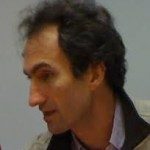Link to Pubmed [PMID] – 18024520
J. Bacteriol. 2008 Jan;190(2):672-80
Gene amplifications have been detected as a transitory phenomenon in bacterial cultures. They are predicted to contribute to rapid adaptation by simultaneously increasing the expression of genes clustered on the chromosome. However, genome amplifications have rarely been described in natural isolates. Through DNA array analysis, we have identified two Streptococcus agalactiae strains carrying tandem genome amplifications: a fourfold amplification of 13.5 kb and a duplication of 92 kb. Both amplifications were located close to the terminus of replication and originated independently from any long repeated sequence. They probably arose in the human host and showed different stabilities, the 13.5-kb amplification being lost at a frequency of 0.003 per generation and the 92-kb tandem duplication at a frequency of 0.035 per generation. The 13.5-kb tandem amplification carried the five genes required for dihydrofolate biosynthesis and led to both trimethoprim (TMP) and sulfonamide (SU) resistance. Resistance to SU probably resulted from the increased synthesis of dihydropteroate synthase, the target of this antibiotic, whereas the amplification of the whole pathway was responsible for TMP resistance. This revealed a new mechanism of resistance to TMP involving an increased dihydrofolate biosynthesis. This is, to our knowledge, the first reported case of naturally occurring antibiotic resistance resulting from genome amplification in bacteria. The low stability of DNA segment amplifications suggests that their role in antibiotic resistance might have been underestimated.

